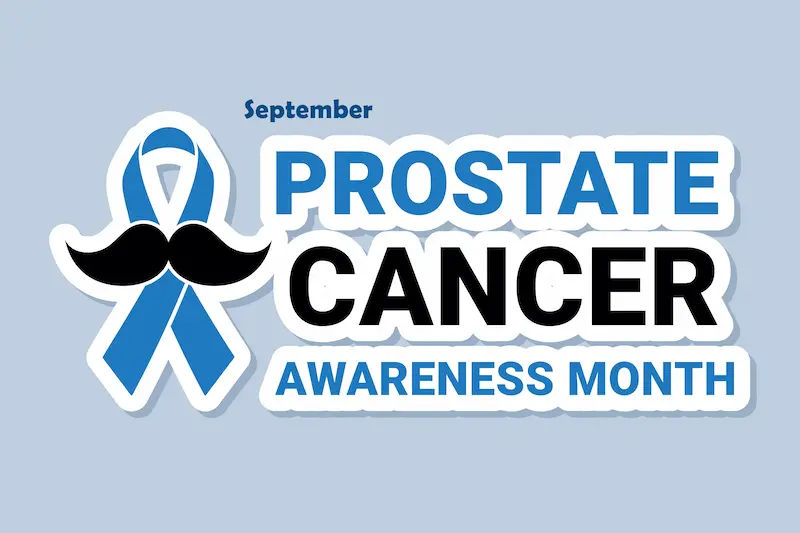Guide to Prostate Cancer Screening And Psa Test
Learn everything about prostate cancer screening and PSA testing—what it measures, when to test, interpreting results, risks, and next steps for smarter decisions.

Written by Dr. Siri Nallapu
Reviewed by Dr. Shaik Abdul Kalam MD (Physician)
Last updated on 29th Oct, 2025

Introduction
Prostate cancer screening can feel confusing: some articles say to get tested early, others warn about overdiagnosis. This guide cuts through the noise with a clear, evidence-based overview of the prostate cancer test most people hear about—the PSA test—and how to use it wisely. You’ll learn what the PSA test is, when to consider screening, how to interpret results, what happens after an abnormal test, and how newer tools like MRI and advanced biomarkers fit in. We also address benefits versus risks, costs, and at-home options. Whether you’re just starting to think about screening, deciding when to test, or navigating follow-up steps, this guide is designed for the general public seeking practical health advice. If you notice urinary symptoms or have concerns, don’t wait—speak to a healthcare professional. And remember, shared decision-making based on your values and risk factors is the best way to approach any prostate cancer test.
PSA Test Basics: What It Measures and Why It Matters
What is PSA?
Prostate-specific antigen (PSA) is a protein made by prostate cells. The PSA test measures PSA in the blood. While elevated PSA can be a sign of prostate cancer, it can also rise for non-cancer reasons such as benign prostate enlargement (BPH), prostatitis (inflammation), urinary infection, recent ejaculation, or even vigorous cycling. That’s why the PSA test is a screening tool—not a diagnosis.
Why PSA is useful—and limited
- Useful: PSA testing can detect prostate cancer earlier, sometimes before symptoms. Earlier detection can allow for curative treatments or safe monitoring (active surveillance) in low-risk cases.
- Limited: PSA cannot tell cancer from non-cancer causes. Many elevations are false positives, and some men with prostate cancer have normal PSA. The test may lead to biopsies that reveal low-risk cancers that might never cause harm (overdiagnosis).
The test at a glance
- How it’s done: A standard blood draw. Many labs also provide home collection services in some regions. For example, Apollo 24|7 offers convenient home collection for basic blood tests; ask if PSA testing is available in your area.
- Typical reference values: Historically, a PSA level of 4 ng/mL or higher was considered elevated, but age-specific ranges and individual risk factors are now commonly used. Free PSA, PSA density, and trends over time can refine interpretation.
- Result timing: Usually 1–3 business days.
Consult Top Specialists Here
Who Should Consider Prostate Cancer Screening?
Here’s who should consider prostate cancer screening:
Age and risk-based recommendations
- Average risk: Many guidelines advise shared decision-making for men aged 55–69. Discuss benefits and harms with
your clinician and decide together based on your values and risk tolerance. - Higher risk: Discussion may begin earlier (e.g., around age 45) for Black men and those with a first-degree relative (father, brother) diagnosed with prostate cancer, especially at a younger age. Some groups consider discussions as early as age 40 for those with multiple affected first-degree relatives.
- Over age 70: Routine screening is generally not recommended for most men; exceptions may be considered for very healthy individuals with longer life expectancy.
Your personal risk profile
Consider:
- Family history (especially early/progressive disease)
- Race/ethnicity (Black men have higher incidence and mortality)
- Overall health and life expectancy
- Prior PSA levels and trends
- Willingness to pursue further testing (MRI, biopsy) if PSA is abnormal
Timing and intervals
Shared decision-making includes choosing an interval:
- Many men opt for testing every 2 years rather than annually to reduce harms from false positives, especially when prior PSA was low.
- High-risk individuals may consider more frequent testing or earlier start ages after discussing with a clinician.
Benefits and Risks: What the Evidence Really Shows
Here are the risk factors of prostate cancer:
What trials tell us
- ERSPC Trial: Showed a relative reduction in prostate cancer mortality with PSA screening over long-term follow-up (about 20% relative reduction), but with risks of overdiagnosis and additional procedures.
- PLCO Trial: U.S.-based trial did not show a mortality benefit, partly due to “contamination” (many in the control group had PSA tests).Together, these trials suggest screening can reduce the risk of dying from prostate cancer, but benefits are modest and must be weighed against harms.
Harms and how to reduce them
- False positives: Elevated PSA often isn’t cancer. Repeating PSA after addressing potential confounders can reduce
unnecessary biopsies. - Overdiagnosis and overtreatment: Some cancers discovered via screening grow so slowly they may never cause symptoms. Active surveillance—regular monitoring with PSA tests, imaging, and occasional biopsies—is a safe option for many men with low-risk disease.
- Biopsy complications: Infection, bleeding, and anxiety are possible. MRI-guided biopsy strategies and targeted sampling can improve accuracy and potentially reduce unnecessary cores.
A practical insight
Ask your clinician to frame numbers as “what happens out of 1,000 men screened?” This population view often clarifies trade-offs, making shared decision-making easier.
Making Sense of PSA Results and Next Steps
Interpreting your number in context
- Absolute PSA level: Historically, ≥4 ng/mL raised concern, but age-specific cutoffs and your baseline matter.
- PSA trend (velocity): Rapid rises may warrant attention, but PSA velocity should not be used alone to trigger biopsy.
- PSA density: PSA adjusted for prostate volume (from ultrasound or MRI) can refine risk; higher density suggests higher risk of cancer.
- Free PSA percentage: Lower free PSA % (e.g., <10–15%) suggests higher risk of cancer when total PSA is in the borderline range (e.g., 4–10 ng/mL).
What to do after an elevated PSA
- Step 1: Repeat the PSA after 6–8 weeks, avoiding factors that can transiently raise PSA (ejaculation, cycling, UTI, prostatitis). Treat infections or inflammation first, then retest.
- Step 2: Consider reflex tests (free PSA, PHI, 4Kscore) to refine risk before imaging or biopsy.
- Step 3: Multiparametric MRI (mpMRI) can identify suspicious areas and guide targeted biopsy, reducing unnecessary sampling.
Medications and conditions that alter PSA
- 5-alpha-reductase inhibitors (finasteride, dutasteride) lower PSA by about 50%. Clinicians typically double the measured PSA to estimate the “true” value in men on these medicines.
- Urinary tract infections and prostatitis can cause temporary spikes; wait until resolved before repeating the test.
- Ejaculation and vigorous cycling can transiently elevate PSA; abstain 48 hours prior to testing.
Beyond PSA: DRE, MRI, and New Biomarkers
Digital rectal exam (DRE)
DRE can detect palpable abnormalities but is less sensitive than PSA for early detection. It may add information when PSA is elevated, but DRE alone is not recommended as a primary screening test.
Consult Top Specialists Here
MRI’s growing role
Multiparametric MRI before biopsy helps:
- Reduce unnecessary biopsies in men with high PSA but low MRI suspicion
- Target suspicious lesions if a biopsy is needed
- Inform active surveillance decisions and follow-up plans
This approach is increasingly endorsed by major guidelines.
Advanced biomarkers
- Prostate Health Index (PHI) and 4Kscore: Blood tests that combine multiple markers to estimate risk of clinically significant cancer.
- PCA3: A urine test sometimes used after a prior negative biopsy.
- Genomic classifiers (used after diagnosis): Aid in risk stratification and treatment planning rather than initial screening.
These tests can reduce unnecessary biopsies when used selectively, but availability and coverage vary.
Preparing for a PSA Test—and When to Retest
Here’s how to prepare for a PSA test:
How to prepare
- Avoid ejaculation for 48 hours before your test.
- Avoid vigorous cycling or perineal pressure for 24–48 hours before testing.
- If you have urinary symptoms suggesting infection (burning, fever, urgency), treat and wait until fully resolved before testing.
- Schedule the blood draw before a DRE or prostate manipulation when possible.
- Tell your clinician about medications (especially finasteride/dutasteride) and supplements.
When to retest
- Borderline elevation without symptoms: Repeat PSA in 6–8 weeks under “ideal” prep conditions.
- After prostatitis/UTI: Wait 6–8 weeks post-resolution before repeating.
- Stable, low PSA and average risk: 1–2 years is typical; some choose 2-year intervals to reduce false positives.
At-home convenience
Where available, at-home blood draws can make it easier to test at the right time. Apollo 24|7 offers home collection for several lab tests; check whether PSA testing is available in your locality. If results are concerning or symptoms persist beyond two weeks, consult a doctor online with Apollo 24|7 for further evaluation.
Shared Decision-Making: Aligning Screening with Your Values
Here’s how to screen prostate cancer:
What matters to you?
- Peace of mind vs. risk of false alarms
- Willingness to undergo MRI/biopsy if needed
- Preferences around active surveillance vs. immediate treatment if cancer is found
- Family experience with prostate cancer
A simple decision aid
Ask your clinician to discuss:
- Your baseline risk (age, family history, race)
- Your personalised screening interval
- What an “abnormal” result would trigger (repeat PSA, MRI, or biomarkers first)
- Your plan if a low-risk cancer is found (strong consideration for active surveillance)
A helpful perspective
Screening is not “all or nothing.” You can choose to start later, screen less often, or pause screening after a series of low results—especially if your risk is low and you prefer to minimise testing.
After an Abnormal Test: From Repeat PSA to Treatment Choices
A typical pathway
- Elevated or rising PSA → Repeat test after prep → Consider biomarkers → mpMRI → Targeted biopsy if MRI suggests suspicious areas.
- If biopsy shows low-risk cancer (e.g., Grade Group 1): Active surveillance is often preferred to avoid overtreatment, with periodic PSA, MRI, and occasional biopsy.
- If clinically significant cancer (e.g., Grade Group ≥2): Discuss treatment options (surgery, radiation, sometimes focal therapies) with a multidisciplinary team.
Active surveillance in the real world
Most low-risk cancers can be safely monitored for years. Surveillance avoids or delays side effects like urinary leakage and erectile dysfunction while preserving the option for curative treatment if signs of progression appear.
When to seek extra support
If your result is abnormal, don’t panic—most elevated PSA results are not cancer. But do follow through with your plan. If a diagnosis is made, consider getting a second opinion. If your condition does not improve after trying these
methods, book a physical visit to a doctor with Apollo 24|7.
Lifestyle, Prevention, and What You Can Control
Here are some lifestyle and prevention techniques:
Healthy habits that support prostate health
- Balanced diet rich in vegetables, legumes, and whole grains; limit processed meats.
- Regular physical activity and weight management; obesity can lower PSA while increasing risk for aggressive disease, complicating interpretation.
- Don’t smoke; moderate alcohol consumption if you drink.
Supplements and PSA
No supplement is proven to prevent prostate cancer. Some herbal products can affect PSA levels or interact with medications. Discuss any supplement use with your clinician.
Know your baseline
Getting an initial PSA in midlife (for example, mid-40s for higher-risk men) can help set an individualised screening plan—men with very low baseline PSA may need less frequent testing.
Conclusion
Prostate cancer screening is not a one-size-fits-all decision. The PSA test is a useful starting point, but it can’t diagnose cancer on its own. The best approach is to personalise screening based on your age, risk factors, health status, and preferences. High-quality evidence shows that screening can reduce the risk of dying from prostate cancer for some men, but it also carries the possibility of false alarms and overdiagnosis. Fortunately, smarter pathways—repeat PSA under ideal conditions, consider advanced biomarkers, and use MRI before biopsy—can reduce unnecessary procedures. If a low-risk cancer is found, active surveillance is a strong option that protects quality of life. Talk with your clinician about what matters most to you, and consider practical access options like home blood collection. If symptoms persist or your results are confusing, consult a doctor online with Apollo 24|7 for timely guidance. An informed, stepwise plan can transform a stressful “test” into a confident, values-aligned decision.
Consult Top Specialists Here
Consult Top Specialists Here

Dr. Ch. Ram Prasad
Urologist
7 Years • MBBS,MS(General Surgery),DRNB(Urology)
Manikonda Jagir
Apollo Clinic, Manikonda, Manikonda Jagir
Dr. J Chaithanya
Urologist
6 Years • MBBS MS GENERAL SURGERY MCH UROLOGY
Bengaluru
Apollo Medical Center, Marathahalli, Bengaluru

Dr. Pavan Kumar S K
Urologist
11 Years • MBBS, MS , Mch( Urology) DNB (Urology)
Bengaluru
Apollo Clinic, JP nagar, Bengaluru
Dr. Mohammed Rehan Khan
Urologist
8 Years • MBBS, MS (General Surgery), Mch (Urology)
Barasat
Diab-Eat-Ease, Barasat

Dr. Venkateshwara Rao K
Urologist
14 Years • MBBS,MS (General Surgery).Mch (Urology)
Bengaluru
Apollo Medical Center, Marathahalli, Bengaluru
Consult Top Specialists Here

Dr. Ch. Ram Prasad
Urologist
7 Years • MBBS,MS(General Surgery),DRNB(Urology)
Manikonda Jagir
Apollo Clinic, Manikonda, Manikonda Jagir
Dr. J Chaithanya
Urologist
6 Years • MBBS MS GENERAL SURGERY MCH UROLOGY
Bengaluru
Apollo Medical Center, Marathahalli, Bengaluru

Dr. Pavan Kumar S K
Urologist
11 Years • MBBS, MS , Mch( Urology) DNB (Urology)
Bengaluru
Apollo Clinic, JP nagar, Bengaluru
Dr. Mohammed Rehan Khan
Urologist
8 Years • MBBS, MS (General Surgery), Mch (Urology)
Barasat
Diab-Eat-Ease, Barasat

Dr. Venkateshwara Rao K
Urologist
14 Years • MBBS,MS (General Surgery).Mch (Urology)
Bengaluru
Apollo Medical Center, Marathahalli, Bengaluru
Consult Top Specialists Here

Dr. Ch. Ram Prasad
Urologist
7 Years • MBBS,MS(General Surgery),DRNB(Urology)
Manikonda Jagir
Apollo Clinic, Manikonda, Manikonda Jagir
Dr. J Chaithanya
Urologist
6 Years • MBBS MS GENERAL SURGERY MCH UROLOGY
Bengaluru
Apollo Medical Center, Marathahalli, Bengaluru

Dr. Pavan Kumar S K
Urologist
11 Years • MBBS, MS , Mch( Urology) DNB (Urology)
Bengaluru
Apollo Clinic, JP nagar, Bengaluru
Dr. Mohammed Rehan Khan
Urologist
8 Years • MBBS, MS (General Surgery), Mch (Urology)
Barasat
Diab-Eat-Ease, Barasat

Dr. Venkateshwara Rao K
Urologist
14 Years • MBBS,MS (General Surgery).Mch (Urology)
Bengaluru
Apollo Medical Center, Marathahalli, Bengaluru
More articles from Prostate cancer
Frequently Asked Questions
1) What is a “normal” PSA level?
There’s no single “normal.” Historically, under 4 ng/mL was considered normal, but interpretation now depends on age, prior PSA levels, free PSA percentage, and risk factors. Discuss PSA levels by age and context with your clinician.
2) Does ejaculation affect the PSA test?
Yes. Ejaculation can temporarily raise PSA. Avoid ejaculation for about 48 hours before your PSA test to reduce false positives.
3) How often should I get a PSA test?
For average-risk men who choose screening, every 1–2 years is common; many prefer every 2 years to reduce false positives. High-risk men may consider earlier and possibly more frequent testing after discussing with a clinician.
4) If my PSA is high, do I need a biopsy immediately?
Not usually. First, repeat the PSA after proper prep and treat any infection. Consider free PSA, PHI/4Kscore, and an MRI before deciding on biopsy. MRI can help target suspicious areas and avoid unnecessary sampling.
5) If I’m diagnosed with low-risk prostate cancer, is treatment always necessary?
No. Active surveillance is often the preferred approach for low-risk cancer, with regular PSA tests, periodic MRI, and occasional biopsy to ensure the cancer remains indolent.




